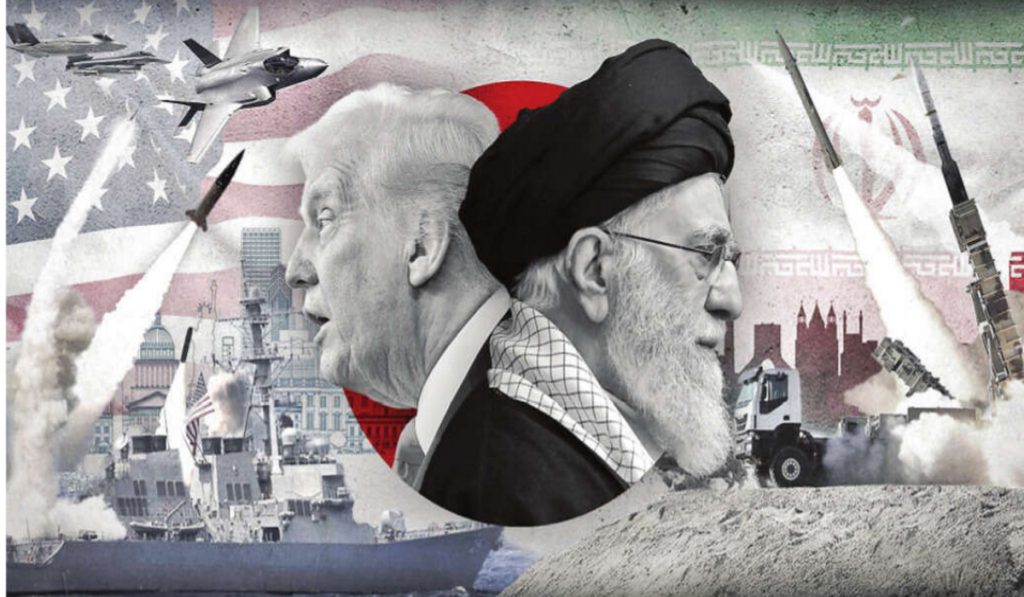In a dramatic turn of events that risks drawing the entire Middle East into a deeper crisis, the United States has officially entered the Israel-Iran conflict. In the early hours of Thursday, President Donald Trump announced that US military aircraft had carried out successful strikes on three of Iran’s most sensitive nuclear facilities — Fordow, Natanz, and Esfahan — marking a sharp escalation in the already volatile standoff. The strike, conducted with what Trump described as a “full payload of bombs,” targeted key sites tied to Iran’s nuclear program. The president’s announcement, made through a post on his TruthSocial platform, carried an unmistakably triumphant tone.
“All planes are now outside of Iran airspace… There is no other military in the world that could have done this. NOW IS THE TIME FOR PEACE!” he declared. While Trump hailed the mission as a show of American strength, the strike has ignited fears across global diplomatic and military circles. Iran, already reeling from Israeli attacks in recent weeks, has vowed retaliation — and the targets may include not just Israel, but US assets spread across West Asia. T h e Un i t e d S t at e s maintains a wide network of military infrastructure across the Middle East — a legacy of decades of strategic entrenchment in the region. These installations are now potential targets. A m o n g t h e m o s t prominent is the Al Udeid Air Base in Qatar — the largest US military base in the region. This critical hub supports aerial operations throughout West Asia and houses thousands of troops.
Nearby in Bahrain, the US Navy’s Fifth Fleet stands as a maritime bulwark in the Persian Gulf. Its location makes it both strategic and vulnerable, especially in a scenario of retaliatory missile strikes or drone attacks from Iran or its proxy groups. In Iraq, two major sites are of concern: Al Asad Air Base, once the site of Iran’s ballistic missile response to the killing of Qassem Soleimani in 2020; and Harir Air Base in Erbil, which has previously come under attack by Iranian backed militias.
Further west, in Syria, the Al Tanf Garrison near the Jordanian and Iraqi borders houses special operations troops. It came into international focus earlier this year when a nearby outpost, Tower 22, was hit by an Iranian-linked militia, killing three US soldiers. Other major installations include Ali al-Salem Air Base in Kuwait, close to the Iraqi border, and Al Dhafra Air Base in the UAE, which hosts surveillance aircraft and F-22 Raptor fighter jets.
These facilities serve not only military purposes but also intelligence and logistical roles — making them tempting targets in any retaliatory playbook. Then there’s the Strait of Hormuz, a narrow passage of critical importance through which a third of the world’s liquefied natural gas and nearly a quarter of global oil flows. Iran has long threatened to close this chokepoint during times of tension. Even a temporary disruption here could send global oil markets spiralling. While Iran has yet to officially respond militarily, analysts believe a response is inevitable. Tehran has a wide range of options — from launching drones and missiles at US assets, to cyberattacks, to employing proxies in Lebanon, Syria, Iraq and even the Red Sea. The fact that the US has now entered the conflict directly transforms the nature of the crisis. What began as a shadow war between Iran and Israel has become a confrontation between two global powers — with ripple effects likely to be felt from Lebanon to the Gulf of Oman.
US Defense Secretary Pete Hegseth confirmed that the Pentagon had ramped up security across all bases in the region. “We have maximum force protection at all times,” he stated during a hearing before the Senate Armed Services Committee. In a significant move, the Pentagon also authorised the voluntary departure of all military family members from the region, a rare step that underscores just how serious the threat of Iranian retaliation is considered to be. According to reports, over 40,000 US troops are stationed in West Asia either on land or aboard naval vessels — all of whom are now potential targets in what could become an asymmetric regional war. Global capitals have responded with growing concern. The European Union has called for calm and urged de-escalation. Russia and China have criticised the US strikes, warning that the region risks plunging into chaos. Oil prices spiked immediately following the news, as markets braced for wider disruption. The White House, for its part, maintains that the strikes were “defensive” and aimed at neutralising facilities with the potential to pose a threat to international peace. But critics argue that this marks a dangerous precedent — with two heavily armed adversaries now pulled into open confrontation. The conflict has reached a point where miscalculation or a single retaliatory strike gone awry could ignite a broader war — one that could engulf not just Israel and Iran, but also Saudi Arabia, the UAE, and Iraq, drawing in major powers far beyond the region. As bombs fall and rhetoric escalates, the prospect of peace feels increasingly distant — and West Asia once again finds itself bracing for an uncertain and turbulent chapter
